Experimental
Probability of drawing a 2 (as a percent)
19%
the probability of rolling a 2 (give answer as a fraction)
1/6
the ratio of the number of ways an event can occur to the total number of equally likely outcomes
Theoretical Probability
360
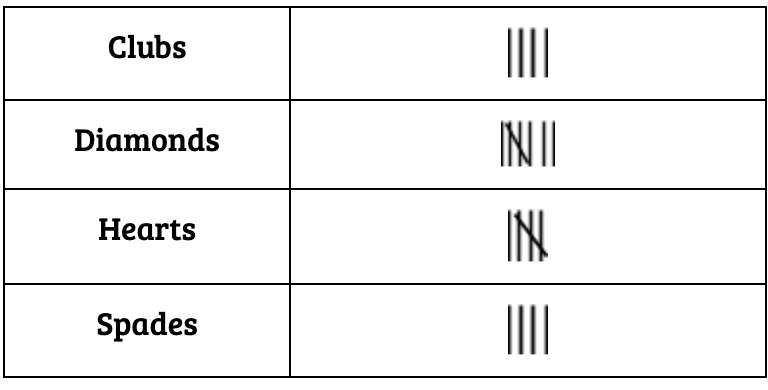
Mr. Barker found the probability of drawing a spade to be 1/5 or 20%. Did he find the theoretical or experimental probability?
Experimental Probability
Given a 4 color spinner with equal parts (red, blue, yellow, green) what is the probability of spinning red?
1/4 or 25%
Probability of drawing the Queen of Hearts?
1/52
Probability of an even number or a 1
(give as a percent)
67%
Events that have no influence on each other
Independent
Is the following categorical or numerical?
- Favourite pizza toppings.
categorical
Probability of flipping heads twice in a row (as a fraction)
1/4
You have a bag of marbles, four red and five green. What is the probability of choosing red?
(4/9) or 44%
What are the 3 main types of triangle?
- Scalene.
- Isosceles.
- Equilateral.
Probability of rolling an 8 on a single 6-sided die?
0 - impossible
The ratio of actual outcomes to the total number of possible outcomes in repeated trials
Experimental Probability
Is the following categorical or numerical?
Number of red cars on the Bruce highway per day.
numerical
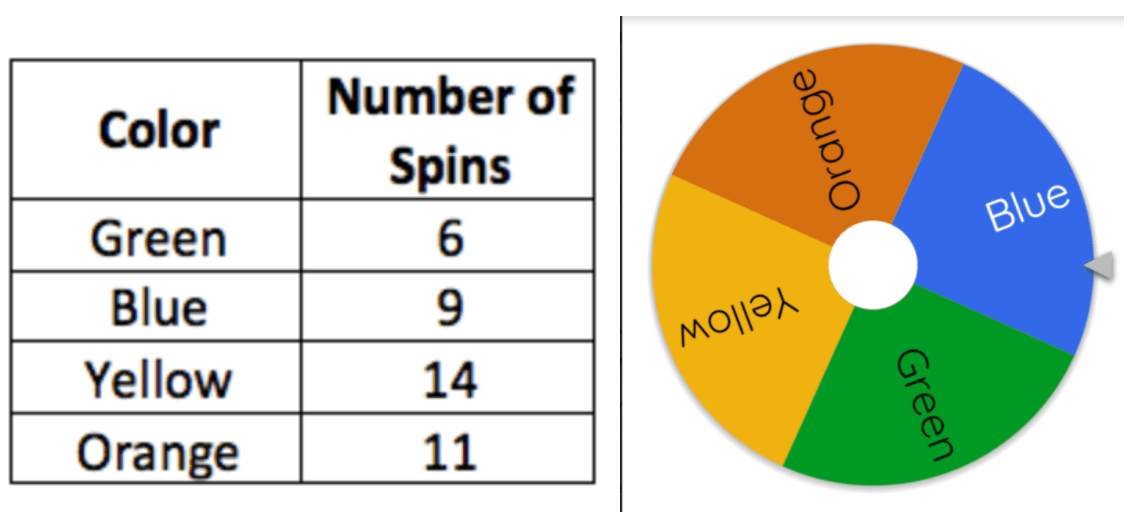
What is the theoretical probability of landing on green or blue?
1/2 or 50%
Given a 4 color spinner with equal parts (red, blue, yellow, green), the probability of spinning red then blue (as a fraction)
1/16
How many degrees are in a triangle?
180
probability of rolling a 5, then a 2 (as a fraction)
1/36
What is the range of the following dataset?
1, 9, 16, 19, 20, 1, 4, 20, 13, 16, 8, 9, 12, 19, 20
19
At a bingo game the numbers that can be called are between 1 and 60.
What is the probability that 8 is called?
1/60

What is the experimental probability of landing on green or blue?
3/8 or 38%
the theoretical probability of rolling a one THEN picking a red card out of a deck of cards
1/12 or 8%
1/6 * 1/2 (half of cards are red so 1/2)
the probability of flipping a coin to heads, then rolling a 3 on a die (as a fraction)
1/12
the probability of rolling a six or five on a 6-sided die.
2/6 = 1/2
What is the mode of the following dataset?
1, 9, 16, 19, 20, 1, 4, 20, 13, 16, 8, 9, 12, 19, 20
20
At a bingo game the numbers that can be called are between 1 and 60.
What is the probability that 8, 6, 30 or 40 is called?
4/60 = 1/15
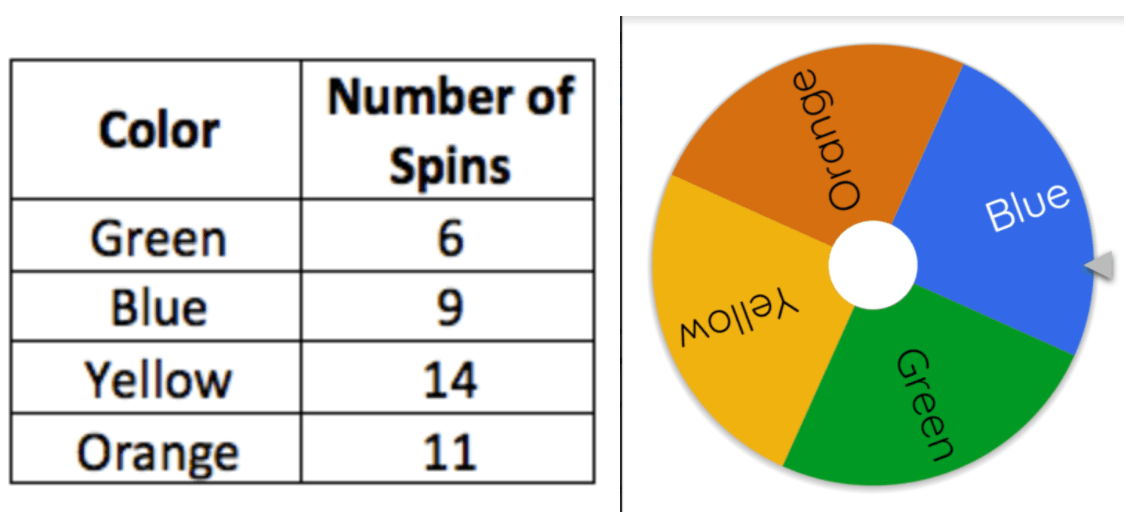
What is the theoretical probability of not landing on green?
3/4 or 75%
 What is the theoretical probability of picking a purple marble?
What is the theoretical probability of picking a purple marble?
2/11 or 18%
If two angles in a triangle are 42 and 75 degrees, what is the missing angle?
63 degrees
What is the mean of the following dataset?
1, 9, 16, 19, 20, 1, 4, 20, 13, 16, 8, 9, 12, 19, 20
12.46
After repeated trials the experimental probability should get _________ to the theoretical probability
closer
At a bingo game the numbers that can be called are between 1 and 60.
What is the probability that a number less than 15 is called?
=14/60 = 7/30
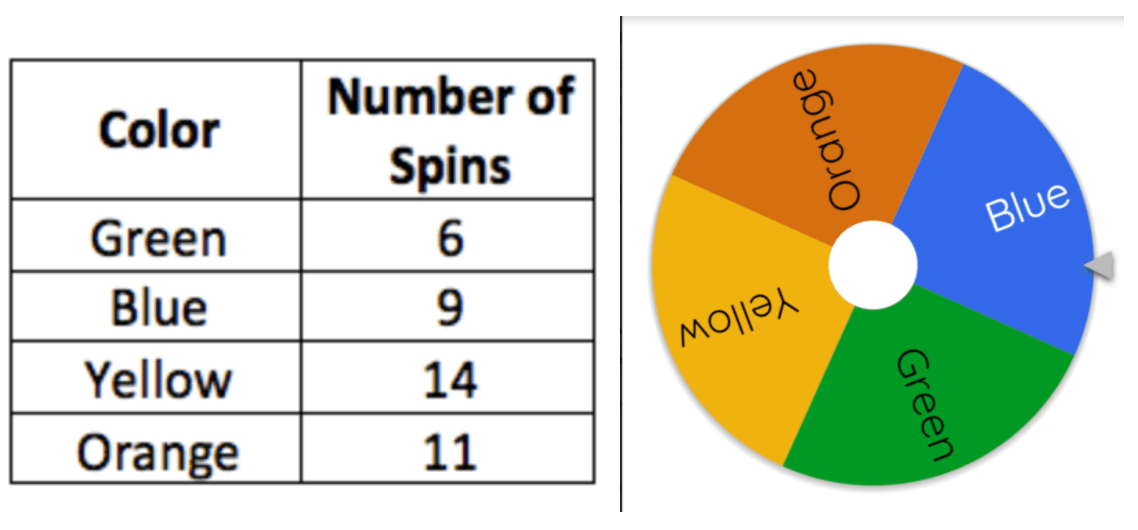
What is the experimental probability of not landing on green?
17/20 or 85%
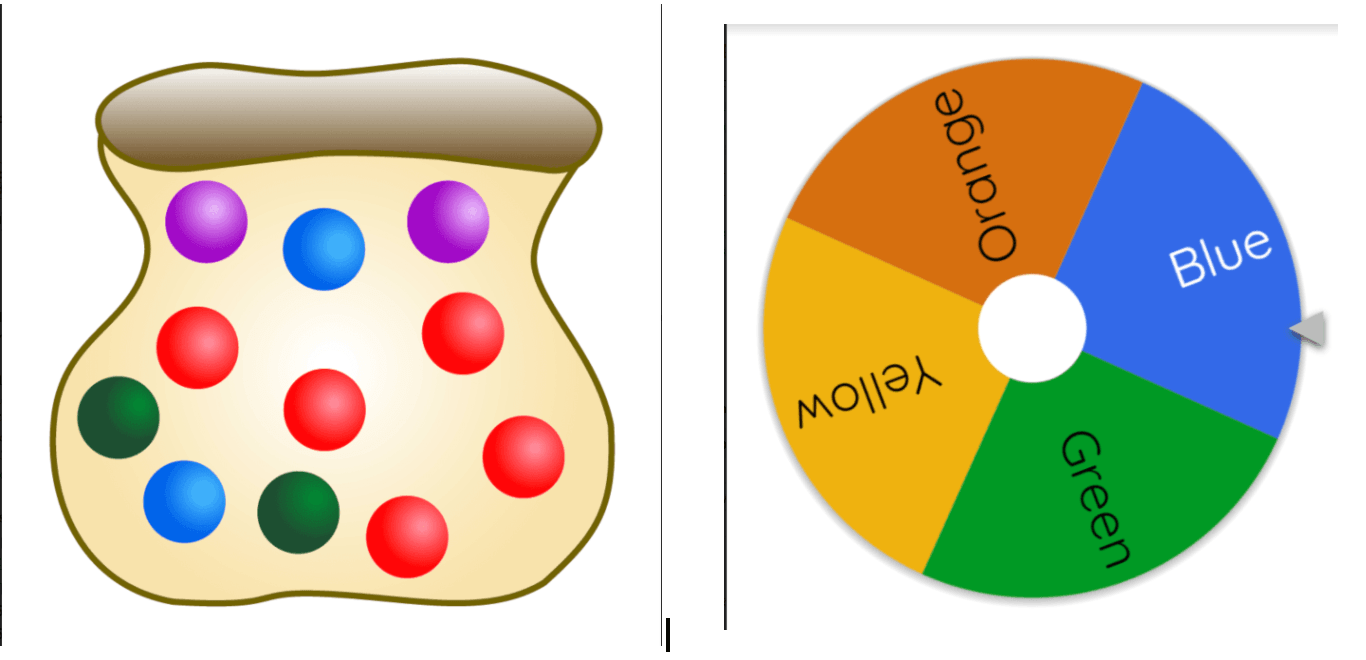
What is the probability of landing on a green, then pulling a red marble, then spinning not orange?
15/176 or 9%